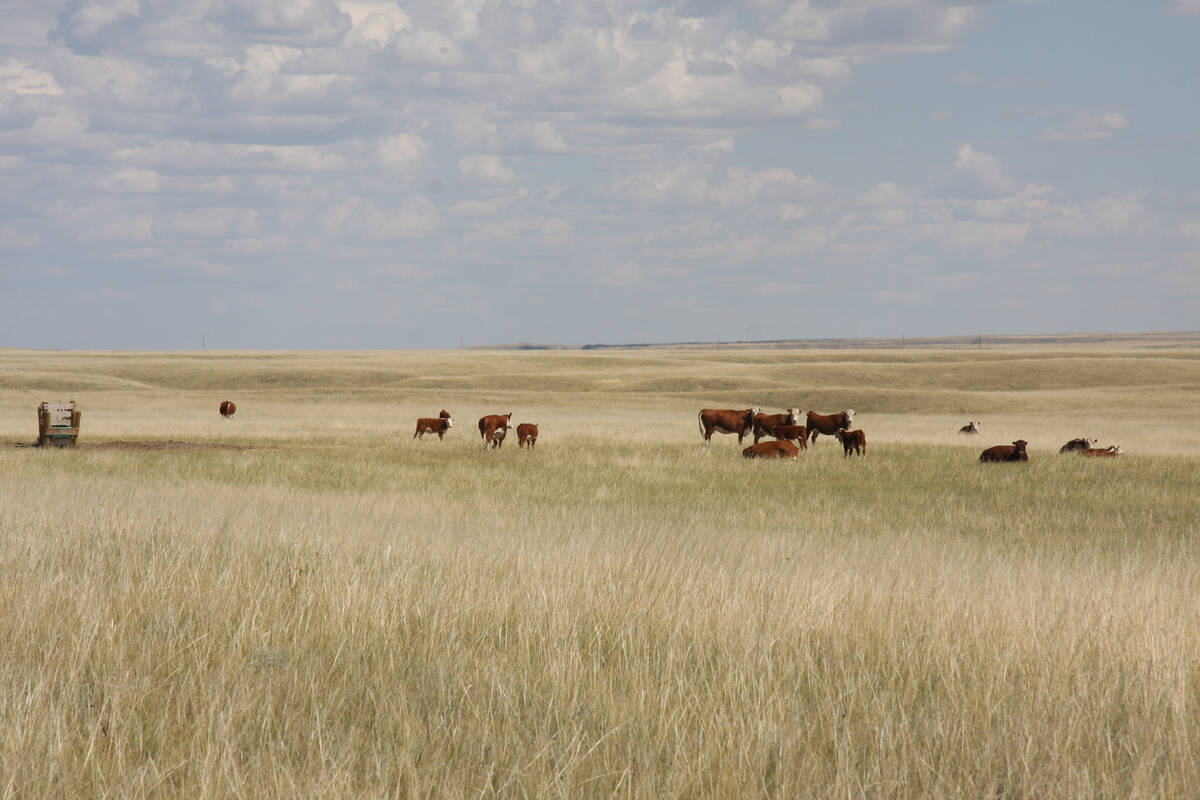Clearfield wheat became Canada’s first registered herbicide tolerant cereal in late January and farmers should be able to seed it in 2004, although limited supply will limit amount.
The first BASF Clearfield cereal product, CDC Imagine hard red spring wheat, is tolerant of the imidazolinone family of herbicides that provide contact and residual control of a wide spectrum of broadleaf and grassy weeds.
It is designed to tolerate the herbicide mixture of imazamox and 2,4-D LV700 ester, which BASF calls Adrenalin. The new post-emergent broad spectrum herbicide will add residual mid- and late-season weed control for CDC Imagine.
Read Also

Conservation groups enter grazing lease debate
The Municipal District of Taber in southern Alberta remains at a political crossroads, weighing the interests of generating revenue for public services with conserving native grasslands.
Imagine fits into the Canada Food Inspection Agency category of “plant with novel traits,” or PNTs, because of its herbicide tolerance, but is not genetically modified as defined by the European Union, Japan or the United States, said Pierre Hucl, the breeder that developed the cereal.
Hucl said mutagenesis, a non-GM process, was used to identify the resistant gene already present in the French winter wheat parent, Fidel, but that Imagine was developed with traditional cross breeding and selection techniques.
This means it is not branded for export as GM and can be delivered into the grain system without being segregated. However, that might happen anyway.
Monte Kesslering of Saskatchewan Wheat Pool said CDC Imagine will be the first commercial wheat “that could potentially be marketed for its varietal purity.
“We have the opportunity to say that no other wheat will be in a field of Imagine,” he said. “Millers want and buy consistency. It’s money to them and there might be specific markets for this new variety.”
Kesslering said the variety has important marketing potential.
“We will be able to market it and provide customers with a paper trail of its production, if they desire it, and the markets are starting to ask for these things.”
Imagine growers will be required to sign contracts similar to those for other Clearfield products, which Kesslering thinks will add to the marketing potential as a large-scale identity preserved product.
CDC Imagine’s genetic history may have begun as a winter wheat, but its closest relative and the one that provided its prairie agronomics is CDC Teal. Hucl said it is suited to the same areas of the West as Teal.
Kesslering said leaf disease resistance is not that strong so it will be well suited to the western half of Saskatchewan and Alberta.
CDC Imagine has poor resistance to fusarium head blight, poor resistance to leaf spot, fair resistance to bunt and good resistance to leaf and stem rust and loose smut. It has good resistance to lodging and shattering and poor sprouting tendencies. Yield so far has tested at 101 percent of AC Barrie.
The wheat pool will market CDC Imagine in Saskatchewan, with Agricore United handling it in Alberta and Manitoba.
The companies say poor growing conditions in 2002 have kept seed stocks low so 2003 and 2004 will be years of seed increase, with large amounts of the seed becoming available only in 2005.
Imidazolinone is the active ingredient in the broad-spectrum herbicides Odyssey, Assert and Pursuit as well as Adrenalin.














